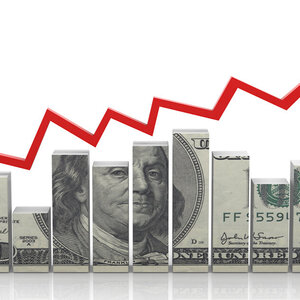The WPJ
THE WORLD PROPERTY JOURNALReal Estate Facts Not Fiction
Commercial Real Estate News

Foreign Investment in U.S. Property to Remain Strong in 2017, China Top Investor
Commercial News » New York City Edition | By Michael Gerrity | January 13, 2017 10:15 AM ET
Real Estate Capital Markets in U.S. to Stay Positive in 2017
According to CBRE Group, the outlook in 2017 for U.S. commercial real estate capital markets --encompassing debt and equity investment activity, pricing and performance, as well as investment strategy -- continues to be favorable.
"Acquisitions activity should remain high in 2017, if slightly lower than the previous year. Global capital flows into the U.S. are expected to remain very strong, with China again the leading source. Most types of debt capital should remain widely available. As asset appreciation abates, investment returns are likely to decline, but nevertheless still achieve favorable levels," said Chris Ludeman, Global President, Capital Markets, CBRE.
Interest Rates and Cap Rates
The interest rate environment is one of the largest influences on real estate capital markets. With the U.S. economy continuing to expand, the Federal Reserve Board is likely to engage in three rounds of monetary tightening, increasing short-term rates in 2017. Longer-term interest rates should remain stable or increase only modestly. The 10-year Treasury yield is expected to remain between 2.25 percent and 2.75 percent throughout 2017. Investor demand for the inherent safety of U.S. debt should continue to offset upward pressure on long-term yields from the Fed and the prospect of higher inflation.
Slightly higher bond yields are expected to have a limited impact on capitalization rates due to strong economic and real estate fundamentals, in addition to solid demand from foreign investors. The spread between cap rates and Treasuries--a proxy for the additional returns commercial real estate is expected to yield relative to low-risk government bonds--is wide enough that the incremental moves the Fed appears poised to make will not necessarily result in higher cap rates. Cap rates are expected to remain steady in markets where fundamentals are still improving. Similarly, commercial real estate values should remain steady during this period.
Foreign Capital
Although accommodative monetary policy has kept bond yields low relative to their historical levels, a comparatively strong economy and a scarcity of high returns elsewhere has kept the U.S. a favorite destination for foreign capital. The volume of foreign capital remains robust, with more than $60 billion invested in U.S. commercial real estate in 2016.
Plans for expansionary fiscal policy with the incoming presidential administration have raised expectations for economic growth and inflation, both of which make investment in real assets like commercial real estate more attractive. As a result, overseas institutional investors and sovereign wealth funds are expected to increasingly target the U.S. to fill their real estate portfolios in 2017.
The preference for liquidity is expected to keep highly sought-after properties in gateway markets popular, but secondary markets such as Dallas/Ft. Worth and Atlanta are poised to attract a greater portion of foreign capital as investors become more comfortable investing outside of premium core product.
Debt Capital
Capital for financing commercial real estate in the U.S. (where debt, on average, represents roughly two-thirds of total investment) should continue to be widely available in 2017. There remain two challenges to mortgage capital availability: CMBS and bank lending, especially for construction loans.
Volatility in the bond markets in Q1 2016 and a changing regulatory environment led to substantially lower levels of CMBS issuance in 2016 (approximately $76 billion versus 2015's $101 billion) and a smaller number of CMBS shops.
"The CMBS industry will likely adapt to the risk-retention rules that were enacted in late 2016; however, the new rules will add costs to the conduit lenders, and it is not yet clear how those costs will be absorbed. Another 2017 challenge for CMBS might be periods of high volatility in the bond market. Such volatility can create pricing uncertainty, and make conduit loans less attractive to borrowers," said Brian Stoffers, Global President, Debt & Structured Finance, Capital Markets, CBRE.
Banks are also facing regulatory pressure that may reduce their financing activity in 2017 for both existing assets and development projects. The latter is particularly problematic, since banks are the primary source of construction capital in the U.S. For construction financing, the industry is likely to see continued tightening of credit standards and higher loan costs at a minimum; a notable decrease in the actual volume of construction loans is quite likely as well.
Other sources of mortgage capital--particularly life insurance companies, Fannie Mae and Freddie Mac--are expected to remain very active in 2017, with lending at or exceeding 2016 volumes.
Sign Up Free | The WPJ Weekly Newsletter
Relevant real estate news.
Actionable market intelligence.
Right to your inbox every week.
Real Estate Listings Showcase
Related News Stories
Commercial Real Estate Headlines
- 2025 Prediction: U.S. Commercial Investment Recovery Expected to Gain Traction
- Holiday Retail Sales for 2024 to Hit Record $1 Trillion
- Tech, AI Industries Drive Largest Share of Office Leasing Activity in U.S.
- Commercial Real Estate Lending in U.S. Enjoys Strong Growth in Q3
- U.S. Multifamily Market Begins Recovery in Q3
- Commercial Investment in Japan Spikes 24 Percent Annually in Q3
- Despite Return-to-Office Mandates, U.S. Office Vacancies Continue to Rise
- PROPSIG Tech Startup Acquired by World Property Data
- U.S. Commercial Mortgage Debt Hits $4.7 Trillion in Q2 as Delinquencies Increase
- Hong Kong Class A Office Rents Continue to Downtick in Mid-Summer
- U.S. Office Landlords Tenant Concessions Decline for First Time in 4 Years
- U.S. Commercial Mortgage Originations Spike 27 Percent in Q2 Over Q1
- Phnom Penh's Commercial Office, Retail Markets Face Slowdowns in 2024
- Global Edge Data Center Market to Hit $300 Billion by 2026
- Commercial Property Transactions in Japan Dive 25 Percent Annually in Q2
- Delinquency Rates for U.S. Commercial Property Loans Downticks in Q2
- Megawarehouse Lease Deals in U.S. Increase in 2024
- Office Tenants' Flight to Quality Buildings Increases in 2024
- Commercial Lending in Japan Upticks 6 Percent Annually in Q1
- AI Driving Significant Global Data Center Growth in 2024
- Total U.S. Commercial Mortgage Debt Rises to $4.7 Trillion in Q1
- U.S. Commercial Mortgage Delinquencies Rise in Early 2024
- Asia Pacific Office Sector to Further Reprice Throughout 2024
- U.S. Retail Foot Traffic to Surpass Pre-Pandemic Levels by 2025
- Commercial Real Estate Lending in U.S. Slowed in First Quarter
- Japan Commercial Property Investment Volume Jumps 7 Percent in Q1
- Asia Pacific Commercial Property Investment Leads the World, Spikes 13 Percent
- Driven by High Rates, U.S. Commercial Lending Imploded 47 Percent in 2023
- After Two Year Slump, Prime Multifamily Metrics Uptick in U.S.
- Commercial Co-Broker Commissions Not Affected by NAR-DOJ Settlement, Yet
- U.S. Office Buildings with Upscale Tenant Amenities Still Enjoy Premium Rents in 2024
- U.S. Commercial, Multifamily Mortgage Delinquency Rates Uptick in Q4
- U.S. Commercial Mortgage Debt Continued to Rise in 2023, Hits $4.7 Trillion
- Nonresidential Construction Spending in the U.S. Falls Sharply in January
- U.S. Multifamily Construction Starts to Decline in 2024
- Commercial Mortgage Lending in U.S. Shows Signs of Stabilization in Late 2023
- Architecture Billings Decline in December as Soft Business Conditions Persist
- Government Sector Claimed Largest Portion of 100 Biggest U.S. Office Leases Signed in 2023
- U.S. Commercial, Multifamily Borrowing Dives 25 Percent Annually in Late 2023
- Record High Multifamily Construction Deliveries Drive Vacancy Rates Higher
Reader Poll
Marketplace Links
This website uses cookies to improve user experience. By using our website you consent in accordance with our Cookie Policy. Read More





